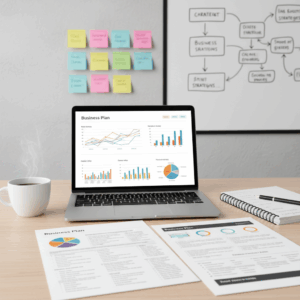Basic relationship between unemployment and inflation
The relationship between unemployment and inflation It is studied through the Phillips curve, which shows a negative correlation between both variables. This indicates that generally, when unemployment decreases, inflation increases.
This phenomenon occurs because a tight labor market generates upward wage pressures, which translate into higher prices. Conversely, high unemployment reduces these pressures, slowing inflation in the economy.
Phillips curve and its meaning
The Phillips curve represents a trade-off between unemployment and short-term inflation. It is based on the observation that low unemployment rates tend to lead to increases in inflation.
This relationship reflects how wage pressures impact prices. When labor demand is high, wages rise, driving higher costs for businesses and, consequently, a general increase in prices.
However, this correspondence is not constant and can be affected by external and structural factors that alter the expected dynamics between these variables.
Example in the post-pandemic Peruvian economy
In the post-pandemic period (2021-2023), the Peruvian economy showed a negative correlation between unemployment and inflation, aligning with the behavior described by the short-term Phillips curve.
During this time, as the unemployment rate declined, a concomitant increase in inflation was observed due to economic recovery and labor market adjustments.
This real-life example confirms how economic theories can be reflected in specific contexts, although there is always a need to consider other factors that can modify this relationship.
Factors that complicate the unemployment-inflation relationship
The relationship between unemployment and inflation It can become complex due to different factors that affect both the labor market and consumer behavior.
These elements generate variable dynamics that make it difficult to maintain a clear balance between these two fundamental macroeconomic variables.
Impact of purchasing power on consumption
When inflation grows and wages do not increase at the same rate, the purchasing power of workers decreases, limiting their consumption capacity.
This reduction in consumption can slow aggregate demand, affecting production and employment, and creating a negative economic vicious circle.
Therefore, high inflation and low purchasing power alter the traditional relationship between unemployment and inflation by weakening domestic demand.
Effects of high inflation on the labor market
The high inflation It increases costs for companies, especially those associated with salaries and materials, generating pressure to reduce staff or freeze hiring.
This may translate into an increase in unemployment or lower job creation, breaking the classic pattern of the Phillips curve.
Furthermore, the uncertainty caused by inflation slows investment and business planning, negatively impacting the labor market.
Business uncertainty and job creation
The economic uncertainty derived from inflationary fluctuations and unstable policies, it generates caution in companies when hiring new personnel.
This prudence has a direct impact on the job creation, increasing the unemployment rate and weakening the economic recovery.
Lack of predictability limits companies' ability to plan for the long term, affecting the stability of the labor market.
Challenges for economic policy
Economic policymakers face the challenge of balancing unemployment and inflation to avoid adverse effects on the economy. Identifying equilibrium points is crucial.
The concept of the natural rate of unemployment, or NAIRU, helps define a sustainable level of unemployment without generating inflationary accelerations, guiding economic policy decisions.
The natural rate or NAIRU and its importance
The NAIRU represents the unemployment level where inflation is neither accelerating nor decelerating. Maintaining unemployment close to this rate is essential for macroeconomic stability.
Attempting to reduce unemployment below the NAIRU can generate inflationary pressures, while unemployment above this rate can produce deflation or high unemployment with social costs.
This concept allows policymakers to better understand the limitations and risks of stimulating the labor market without uncontrolled inflation.
Consequences of imbalances between unemployment and inflation
A prolonged imbalance between unemployment and inflation can cause persistent inflation or economic stagnation with high unemployment, affecting quality of life and economic confidence.
Inadequate policies that ignore the natural level of unemployment can lead to inflationary spirals or recessions, hampering economic recovery and generating social instability.
Therefore, coordination between monetary and fiscal policies is essential to maintain balance and avoid the negative consequences of macroeconomic imbalances.
Implications for macroeconomic stability
The balance between unemployment and inflation It is crucial for macroeconomic stability, as it directly influences social well-being and economic development.
Maintaining stable prices and a healthy labor market prevents extreme fluctuations that can affect consumer and investor confidence.
Importance of the balance between prices and the labor market
A proper balance between prices and employment ensures that the economy functions efficiently, avoiding excessive inflationary pressures or high levels of unemployment.
If inflation gets out of control, it can erode purchasing power, while high unemployment reduces demand and economic growth.
Therefore, policies must seek a balance that maintains moderate inflation and a dynamic labor market that promotes inclusion and social stability.
Considerations for monetary and fiscal policies
Monetary and fiscal policies play an essential role in regulating the interaction between unemployment and inflation to preserve macroeconomic stability.
Authorities must design measures that moderate inflation without negatively impacting employment, adjusting interest rates and public spending precisely.
Controlling inflationary expectations and encouraging investment are priorities to avoid cycles of instability that undermine sustained growth.






